5 Techniques for Early Spring Smallies
Once winter's ice has melted, lethargic smallmouth bass can be caught with these five essential cold-water techniques.

While some anglers are able to fish open water throughout the winter, many of us in the Northeast are limited to fishing on ice. As much fun as that is, there is nothing quite like being on a boat even when it’s cold. Catching bass late into the fall or winter, or as soon as the ice melts in the spring can be tough, but after a long winter, it’s worth the challenge. When the water temperature is in the mid-30s and the ice begins to melt, grab a few rods and leave the cabin fever at home. Once you find the first accessible boat launch and figure out how to stay warm, you just need to locate some fish and apply these techniques for some early spring smallies.
(Note: On The Water is reader-supported. When you buy through links on our site, we may earn an affiliate commission.)
Locating Ice-Out Bass
Depending on the region, when a lake has defrosted enough to launch a boat, chances are smallmouth can be caught in their winter hideouts before they start to move shallower. Typically, it takes 50-degree temperatures and longer daylight for smallmouth to even think about spawning. Until then, they are generally deeper than 15 feet.
Depending on the lake, the places to start looking for cold-water bass may be different. On deeper lakes with structure, such as Lake Champlain, bass can be caught in obvious places. Fish will be schooled up and located around rock piles, ledges, humps, and reefs—all of which are easy to pick out on mapping software like Humminbird’s Lakemaster VX—and are good places to start.
Large flats or points that jut far out into a lake provide areas for bass to quickly move between shallow and deep water in the spring after the spawn, then once again when they are done feeding in the fall. The in-between areas are perfect for bass to stage on nearby rocks or other cover. From late winter into spring, smallies will be along those same areas waiting for the water to warm up enough to again move shallow. The deepest flats with the sharpest breaks provide quick access to shallower feeding areas, even if the window is shorter. When the ice melts, bass are inactive, but they will feed. Subtle changes in water temperature, a change in wind direction, or afternoon sunshine can fire up a cold-water bass.
Fishing Slow
When the water is cold, bass are lethargic due to their slowed metabolisms. The baitfish they are eating are semi-dormant and slow moving, so bass prefer to exert as little effort as possible. Overall, smaller and natural-looking, slow-moving baits are key to getting bites. Some “reaction” baits also have a place, but, in general, fish hang close to the bottom and are not up for chasing.
The best method is to make a long cast beyond the fish and slowly retrieve the bait with the rod tip at 11 o’clock. Because the bites can be subtle, keep an eye on your line. This time of year, getting a bite on the fall is unlikely but watching the line will give an indication of an aggressive strike.
The common theme for baits is to use slow-moving, bottom-contacting offerings that cater to lazy bass. As the water warms up into the upper 40s, bass become more aggressive and are likely to react to a faster, more erratic action.
(Note: On The Water is reader-supported. When you buy through links on our site, we may earn an affiliate commission.)
Techniques for Early Spring Smallmouth
In cold conditions, I focus on five proven techniques that cover most of the scenarios I run into on the water.
Dropshot Rig
One of the easier baits to fish in colder weather is a dropshot, and my favorite is the Berkley MaxScent Flat Worm. It can be dragged slowly and fished in and around rocks or other types of bottom without leaving the strike zone.
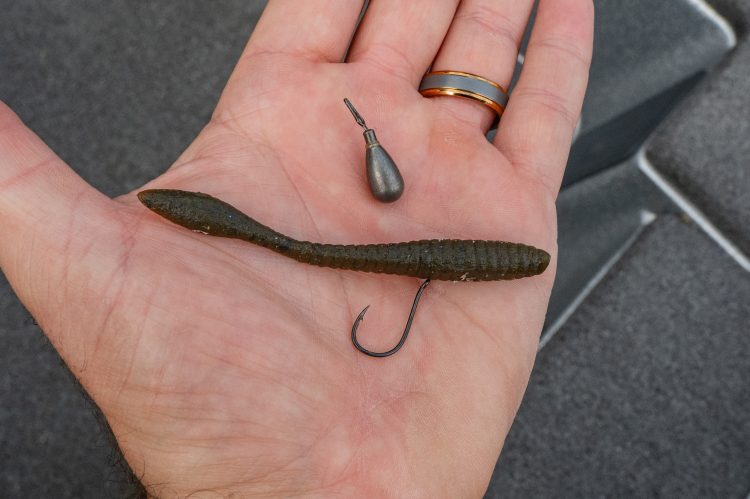
With fish tight to the bottom, a dropshot is productive when dead-sticked around cover or cast and dragged over a big flat.
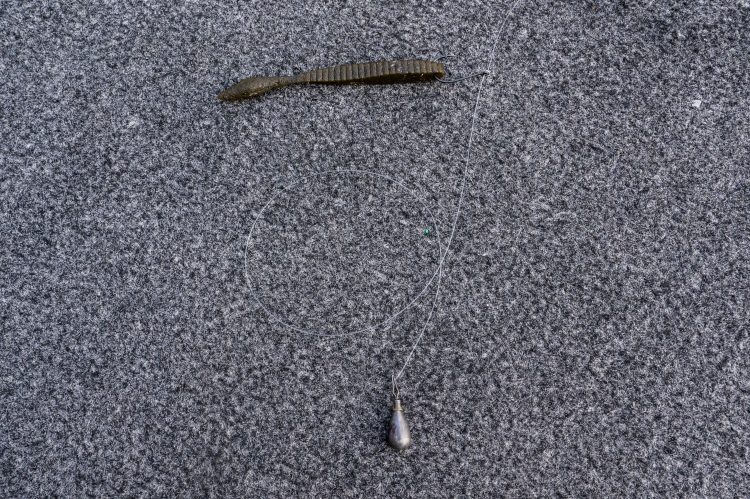
Similarly, when fishing vertically with electronics, it’s one of the best baits for targeting bass with live sonar or dropping right below the trolling motor when a fish appears on 2D sonar. For kids or beginners, a dropshot is tough to beat and an excellent choice when searching for bass.
Gear
For a dropshot, I keep it simple with a 7-foot medium-action rod and a reel with a smooth drag. For a higher-end combo, I turn to an Abu Garcia Zenon spinning rod paired with an Abu Garcia Revo RKT spinning reel. The 7.6:1-ratio reel makes getting a bait to the boat and back in front of bass simple. I pair 10-pound braided main line with an 8-pound fluorocarbon leader.
Football Jig
When you know exactly where the bass are sitting and need a bait that will get the bigger fish excited, use a football jig, like the Beast Coast Baby Dozer Football. It can be angled around rocky cover with ease and, more importantly, fished extremely slowly. The Dozer features friction bumps on its tungsten-compound football head for increased bottom feel that also allows the bait and trailer to stand up off the bottom with minimal rod movement.
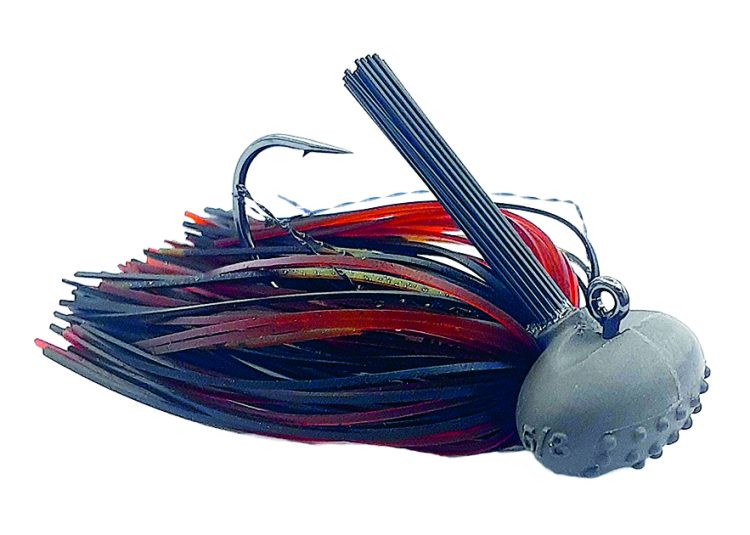
On large rock flats or in smaller, isolated areas where the fish are sitting, a football jig will get bites. The “finesse” size bait is available in 7/16 or 5/8 ounce, which is perfect for making long casts and maintaining bottom contact to feel every rock.
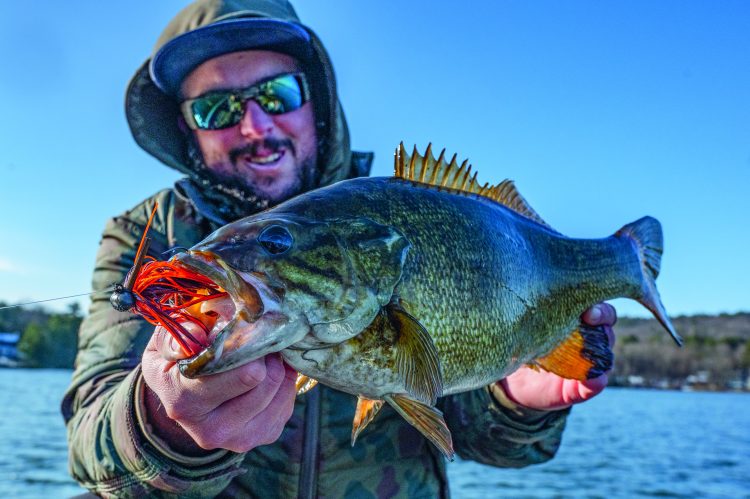
Gear
For the compact football jig, a lighter rod is needed to avoid bending the hook. The ideal setup is a Daiwa Tatula 7-foot, 3-inch medium-heavy casting rod with 14-pound fluorocarbon line. The medium-heavy rod allows for long casts while maintaining constant bottom contact on a slow retrieve. A 7.3:1-ratio Daiwa Tatula 103HS reel takes up line quickly on long casts and has a good drag. The best trailer is a compact soft-plastic swimbait or small craw. Either are ideal for providing enough lifelike action to the slow-moving jig.
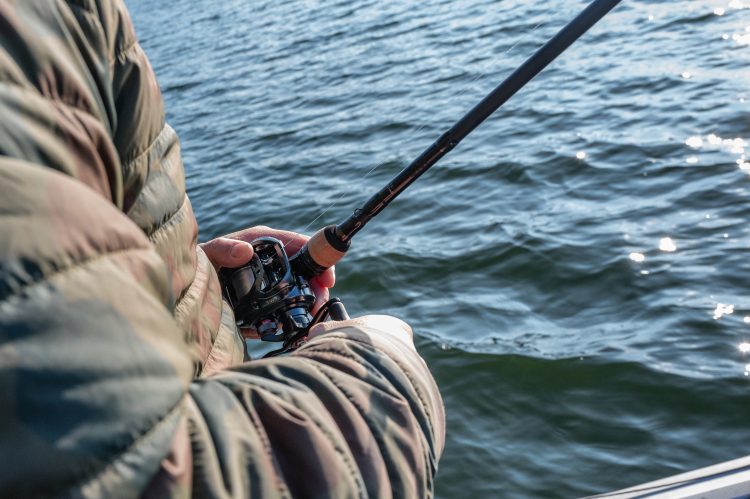
Blade Bait
Old and reliable, the blade bait always seems to get it done in cold, winter conditions just before the ice forms and just after it melts. More of a reaction-style presentation, the versatility of a blade bait allows you to quickly figure out the mood of the fish and adjust the cadence. It can be fished fast and ripped hard off the bottom to draw a strike from aggressive bass or pulled with a shorter rod lift and killed so it erratically falls back to the bottom. To be effective, the bait must fall on a slack line to emulate a dying baitfish action.
Most of the time, the bite will come on the fall, and you will feel pressure on the lift. A blade bait is basically a reaction bait for all water depths and its aggressive vibration draws the attention of nearby bass. Once the bait is ripped off the bottom and then freefalls, a smallmouth cannot stand it.
Gear
A blade bait can be thrown on any setup. For kids and beginners, I suggest a spinning rod, though adults and more experienced anglers can fish it on a casting setup. While lighter options are productive and especially suited for spinning gear, I prefer a ½-ounce blade bait thrown on casting gear. The heavier bait allows for longer casts and provides sharp, controlled action.
Smaller blade baits fished on spinning gear is my go-to for more vertical presentations. The SPRO Carbon Blade Tungsten blade bait is ideal for under-the-boat situations. When making long casts and increasing the size of the bait, the larger Steelshad Blade Bait is highly effective on a more horizonal retrieve.
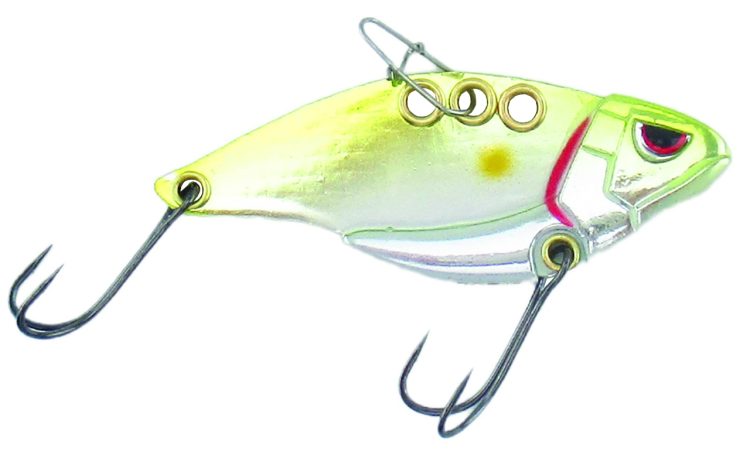
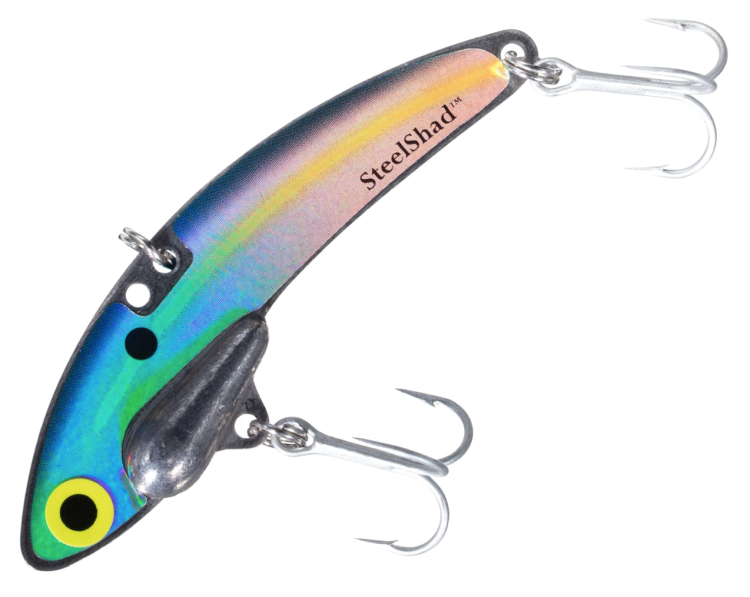
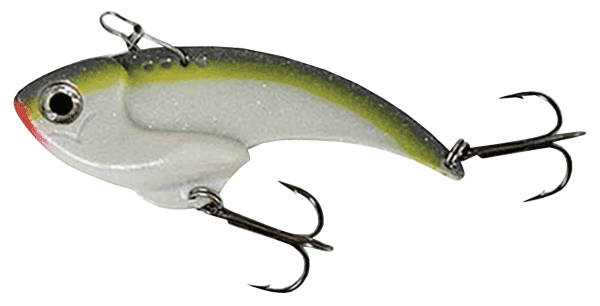
Blade baits get bites when the water is cold. You really can fish them on whatever gear is available. The most important rule to remember is to experiment with ripping the blade and always letting it fall back to the bottom on a slack line.
Underspin
An underspin is another versatile cold-water fish-catcher that does it all under a variety of conditions. Leading up the first cold front in the fall and coming out of winter in the spring, this technique will continue to produce for both smallmouth and largemouth. With a long cast, you can vary the retrieve speed to maintain bottom contact around all types of cover while giving the fish something flashy to draw their attention.
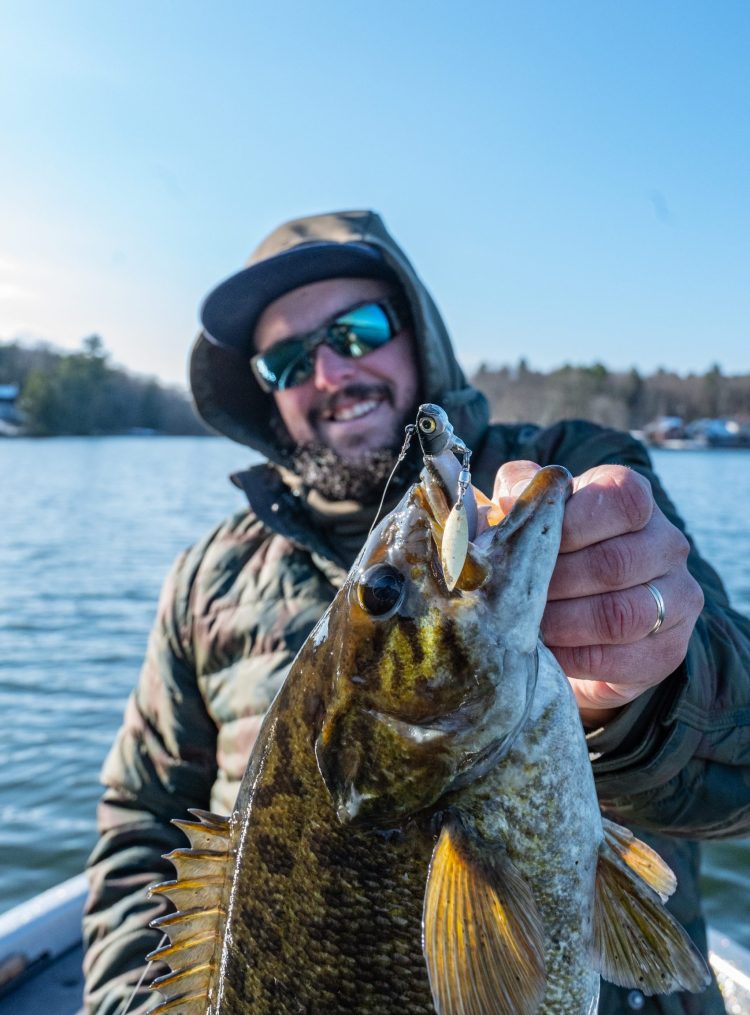
With a finesse swimbait or crawfish trailer, the Coolbait Lures Down Under Underspin is a great option. Available in several different head/blade combinations with many sizes for a range of depths, the most productive technique is making a long cast to rocky cover and slow-reeling the bait while ticking the bottom.
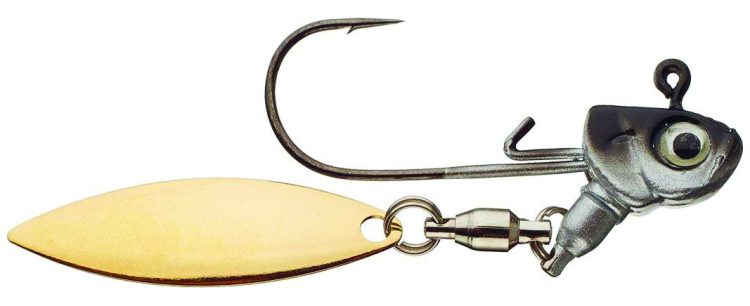
Intermediate pauses give following fish a better look and opportunity to bite. For more aggressive bass, a slow retrieve is all that’s needed. As the water warms, experiment with faster retrieves and more rapid jerks of the rod tip.
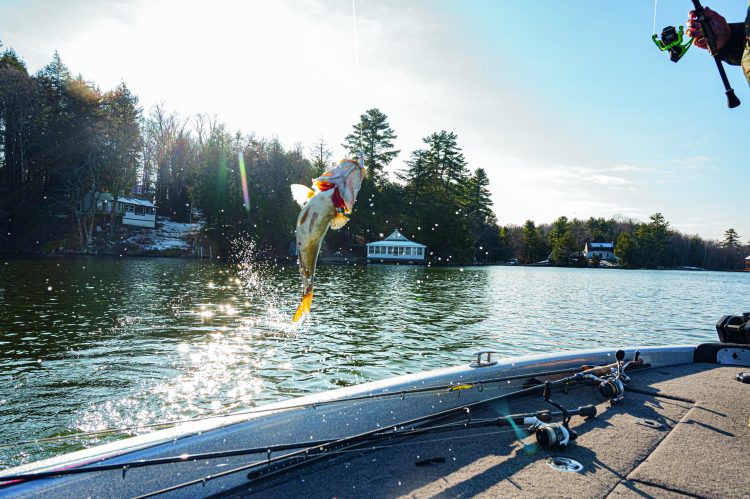
Gear
Like the blade bait, an underspin can be fished successfully on both spinning and casting gear. For spinning gear, a 7-foot medium-action rod with 10-pound braid and a 10-pound fluorocarbon leader is ideal. For heavier baits in deeper water, increasing the rod to medium-heavy and the leader to 12-pound gives a solid hookset with more protection from rocky cover. With casting gear, a 7’ medium or medium-heavy rod with 14-pound fluorocarbon line works well.
Jerkbait
As the water warms and the fish become more active, a jerkbait, like the Berkley Stunna Jerkbait 112+1, is proven to get bites. It excels in cold, ice-out conditions, but it does take patience to work the bait extremely slowly, with 30 seconds or longer between jerks of the rod. As bass become more aggressive, jerking the bait faster and using shorter pause times may be necessary.
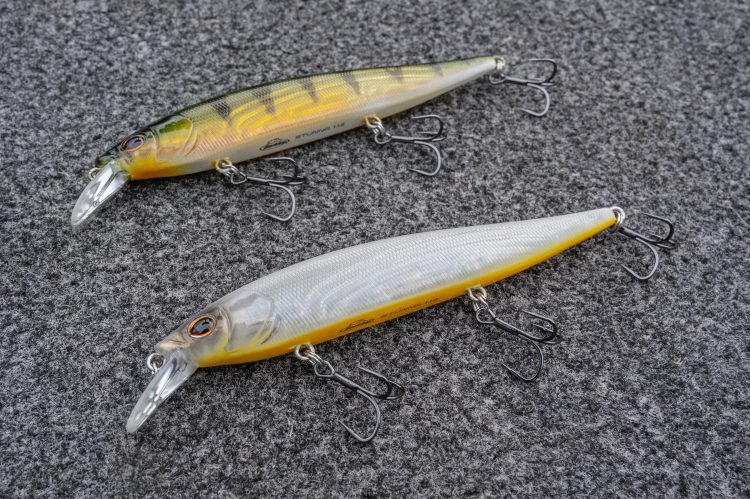
For ice-out conditions, fishing a jerkbait is more difficult since the bass are in deeper water and aren’t as willing to chase. The ideal situation for jerkbait fishing is when bass pull off a ledge and position themselves over the shallower portion of structure. A deeper-diving, slow-sink jerkbait takes time to get down where the fish are positioned and is a great alternative when fish are willing to react.
The Berkley Stunna sinks slowly and is designed to work over deeper water under tough conditions. With forward-facing sonar such as the Humminbird MEGA Live Imaging, anglers can watch lethargic fish rise off the bottom and react to the bait.
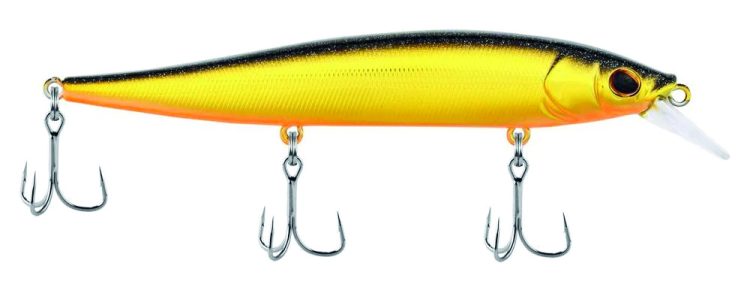
Gear
A jerkbait will take you right up to the spawn when smallmouth move to staging areas or shallower water. After ice-out, getting the bait deep enough is critical, so a lighter line helps the bait sink freely and provides enough action for short jerks of the rod. A 7’ medium-action rod with 8-pound fluorocarbon line and 6.3:1-ratio reel are ideal.
Related Content
4 Blade Baits for Smallmouth Bass
1 thought on “5 Techniques for Early Spring Smallies”
-
Capt. Pete Rosko Try a Sonic BaitFish, mfg’d by the Mack’s Lure Company in Wenatchee, WA. Tie it to the nose, tail or top-of-its back. It’s unique vibration is the same on the lift and fall. It also looks like a real bait fish. Capt. Pete
Leave a Reply